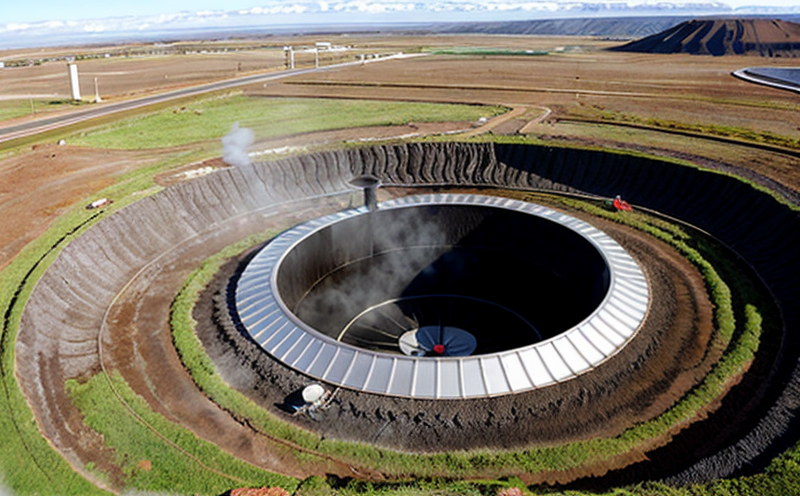ASME NDT Standards Inspection Testing in Geothermal Plants
The American Society of Mechanical Engineers (ASME) establishes a range of codes and standards that are crucial for ensuring the safety, quality, and reliability of pressure vessels, piping systems, and other mechanical components used in various industries. One such critical area is geothermal energy system testing. Geothermal plants rely on robust infrastructure to harness the Earth's heat efficiently, making stringent non-destructive testing (NDT) standards essential.
The ASME codes provide a framework for ensuring that materials, welds, and components used in these facilities meet strict quality requirements. This is particularly important as geothermal systems operate under high temperatures and pressures, which can put additional stress on the machinery and structures over time. By adhering to ASME standards during regular inspections, operators can maintain optimal performance, extend equipment lifespan, and prevent potential failures that could lead to costly downtime or safety hazards.
The process of ASME NDT inspection in geothermal plants involves several key steps. First, the components being tested must be prepared according to specified guidelines to ensure accurate results. This includes proper surface cleaning and degreasing if required. Next, various non-destructive testing methods such as ultrasonic testing (UT), radiography, magnetic particle testing (MPI), and visual inspection are employed depending on the specific component and its location within the plant.
Once these tests have been completed, detailed reports summarizing findings must be generated and reviewed by qualified personnel. These documents serve not only as records of current condition but also form part of an ongoing maintenance plan for future inspections. Regular adherence to this rigorous process helps identify any developing issues early on so they can be addressed promptly before becoming more serious problems.
Another critical aspect of ASME NDT testing in geothermal plants is the use of advanced technology tailored specifically for challenging environments like these facilities. For example, remote viewing systems allow technicians to examine hard-to-reach areas without interrupting plant operations. Additionally, sophisticated software tools help analyze data collected from various types of inspections more efficiently than manual methods could ever do.
By implementing ASME NDT standards inspection testing in geothermal plants, operators demonstrate their commitment to upholding industry best practices while ensuring maximum safety and reliability throughout all phases of operation. This proactive approach not only protects personnel but also contributes significantly towards sustaining environmental sustainability goals associated with renewable energy production.
Benefits
- Enhanced Safety: Ensures compliance with international safety standards, reducing risk of accidents and injuries.
- Prolongs Equipment Lifespan: Identifies potential weaknesses early on to avoid premature failure or costly repairs.
- Improved Operational Efficiency: Regular inspections help maintain optimal performance levels for continuous operation.
- Cost Savings: Preventive maintenance strategies reduce unexpected breakdowns and associated expenses.
Industry Applications
| Component Type | Description | Testing Requirements |
|---|---|---|
| Pressure Vessels | Critical components responsible for containing fluids or gases under pressure. | Comprehensive UT and radiography to ensure integrity of welds and base metal. |
| Piping Systems | Conveyants designed to transport liquids or gases through the plant. | UT, MPI, and visual inspection for detecting cracks, corrosion, and misalignment. |
| Turbine Blades | High-performance elements responsible for converting thermal energy into mechanical power. | In-depth UT to assess internal defects without compromising blade integrity. |
Why Choose This Test
Implementing ASME NDT standards inspection testing in geothermal plants offers numerous advantages that make it an indispensable practice within the industry. Firstly, it ensures full compliance with international regulations and best practices set forth by renowned organizations like ASME itself. Secondly, such rigorous inspections contribute significantly towards enhancing overall safety levels by identifying potential hazards early on before they escalate into major issues.
Furthermore, these tests play a crucial role in extending equipment lifespans through proactive maintenance plans aimed at addressing minor faults before they become significant problems requiring extensive repair work or replacement. By doing so, operators can save substantial amounts of money that would otherwise be spent on emergency repairs and extended downtimes.
Additionally, regular ASME NDT inspections help maintain optimal operational efficiencies for continuous plant operations by ensuring all critical components remain in top condition throughout their lifecycle. This translates directly into higher production rates and lower energy consumption costs over time.





